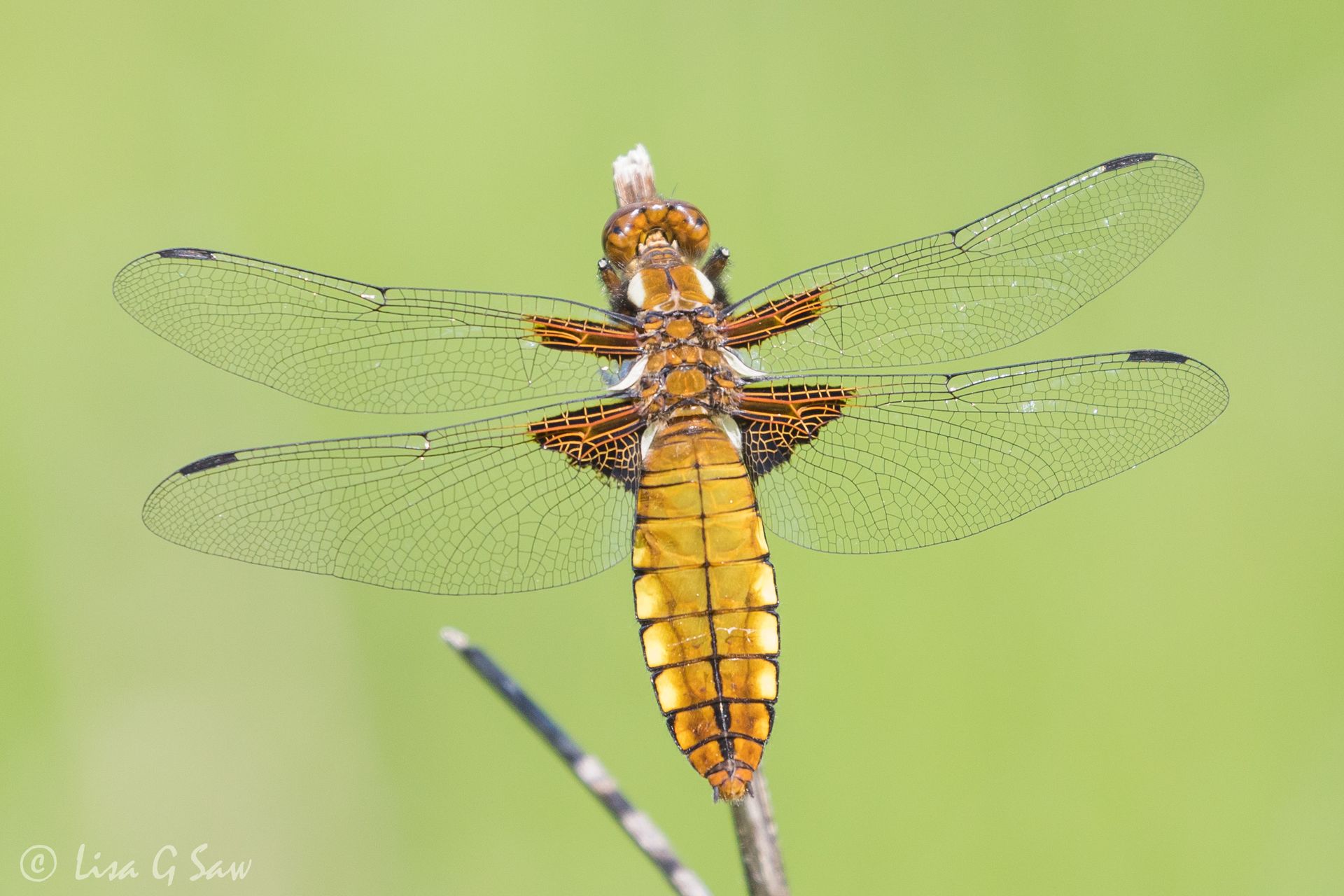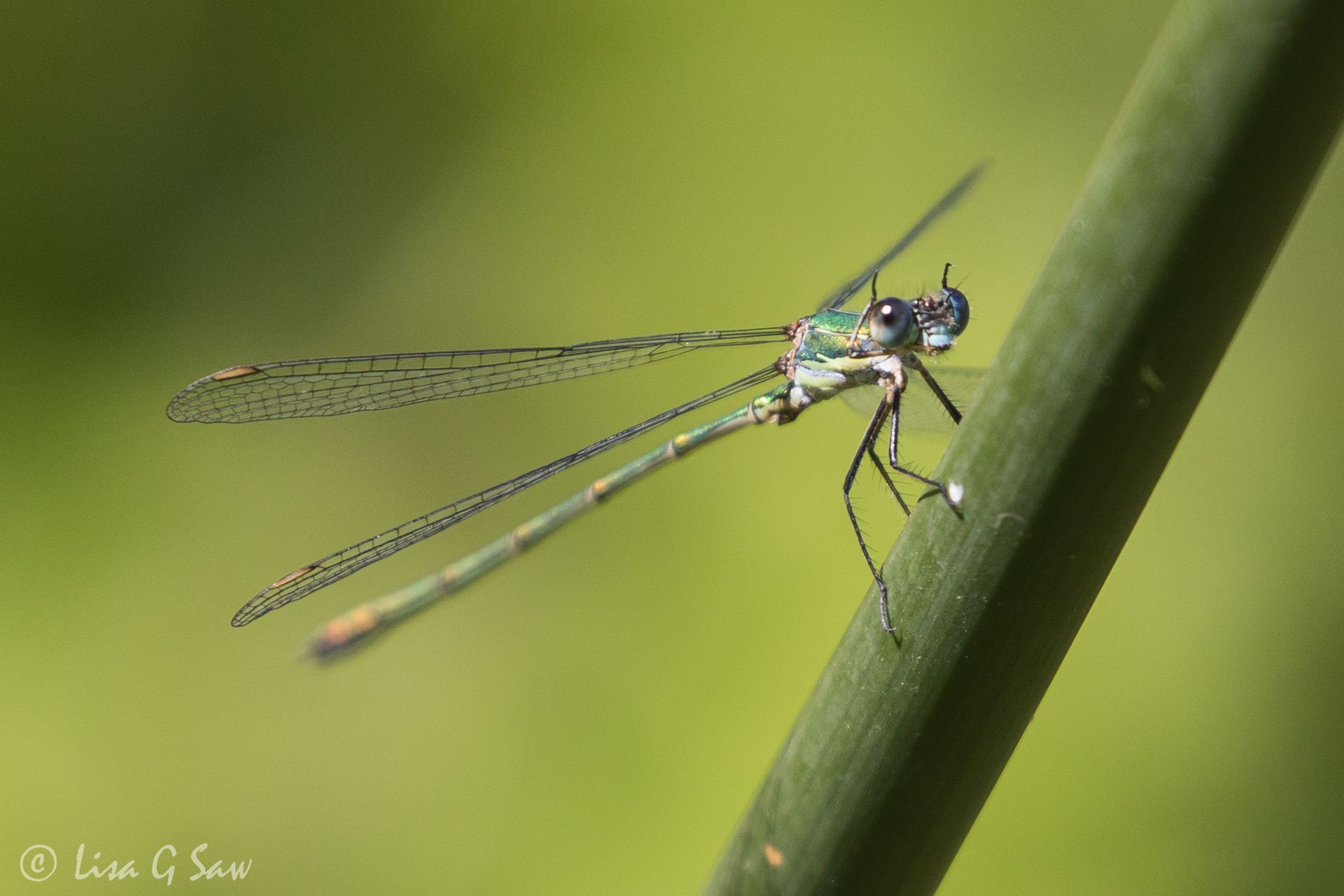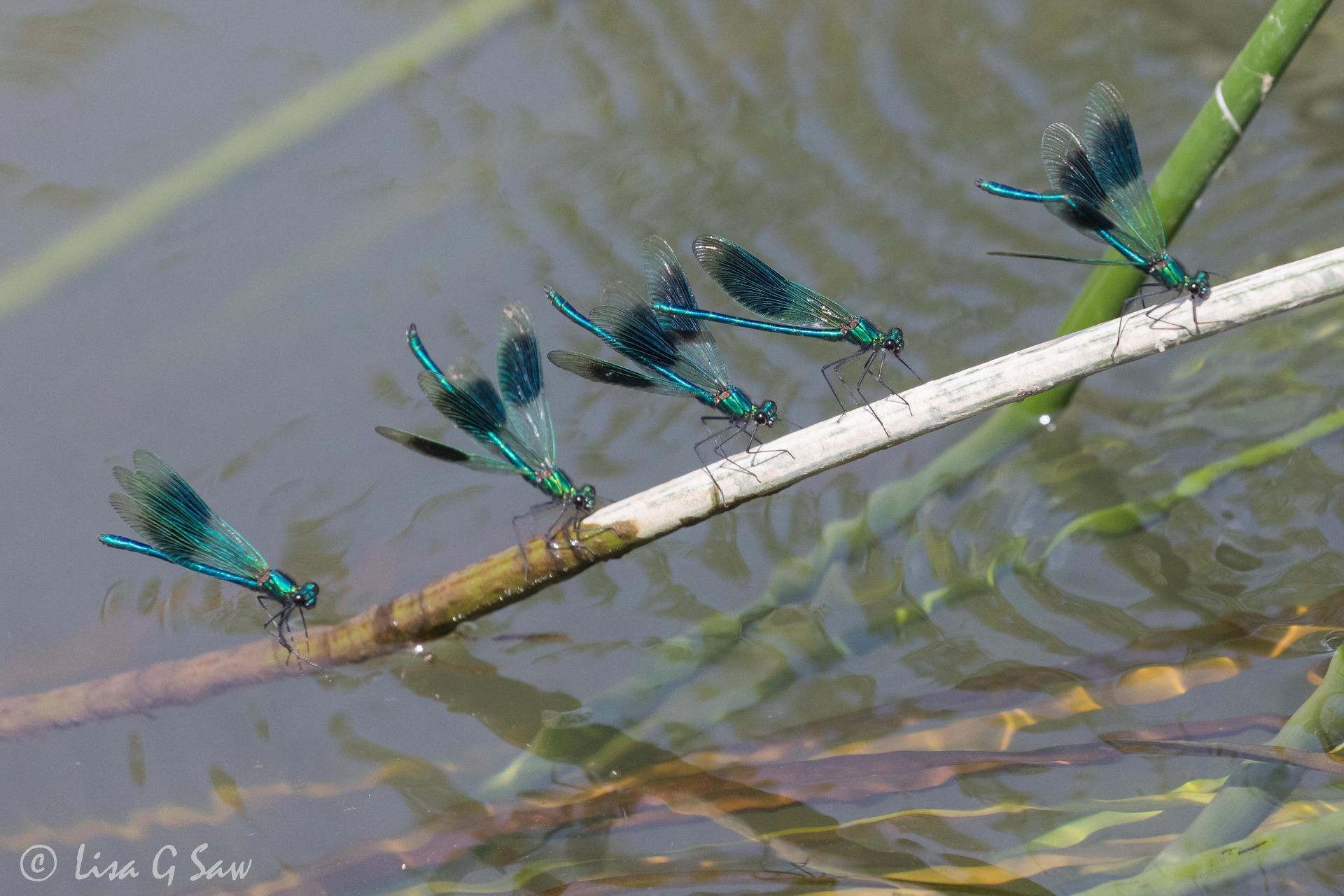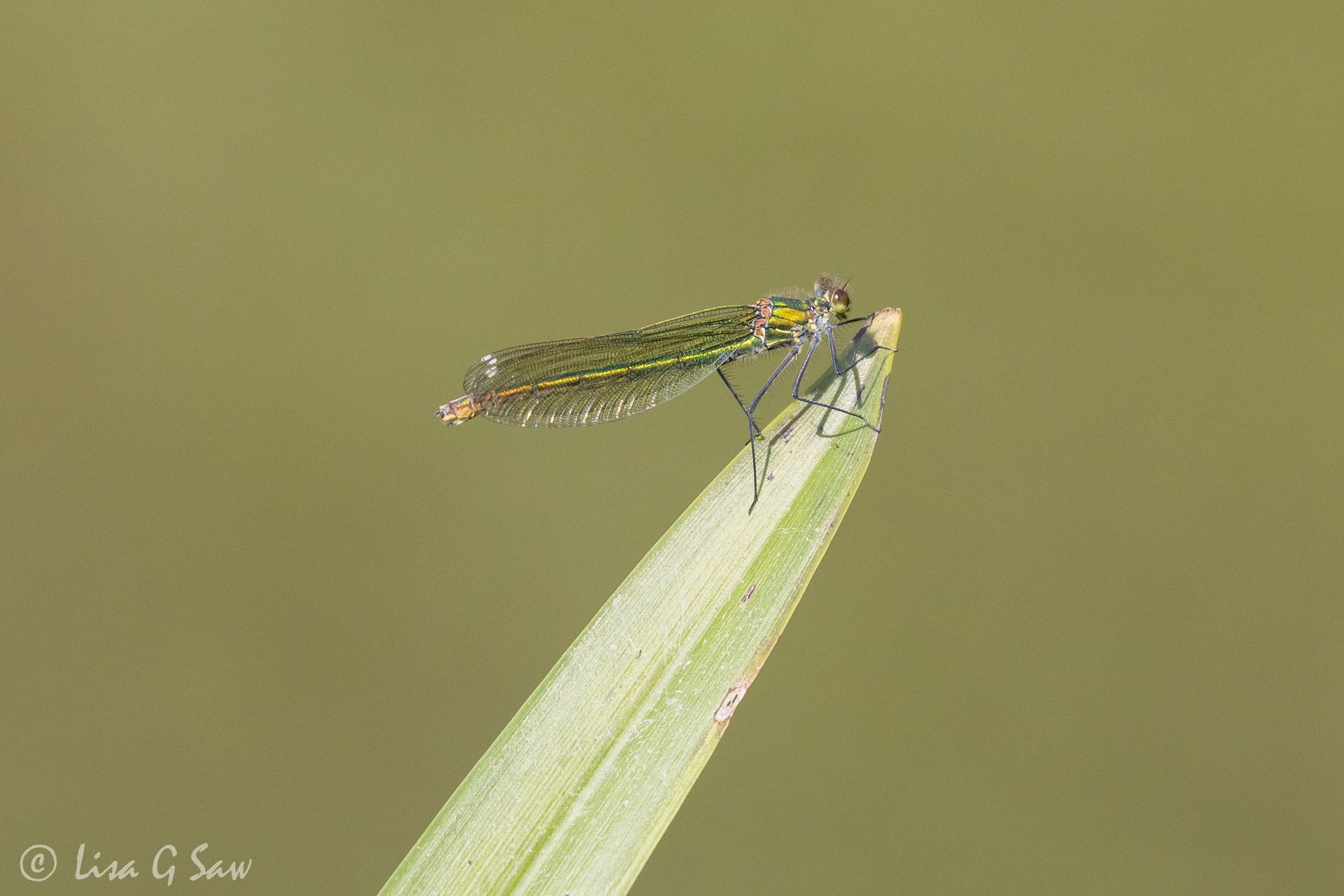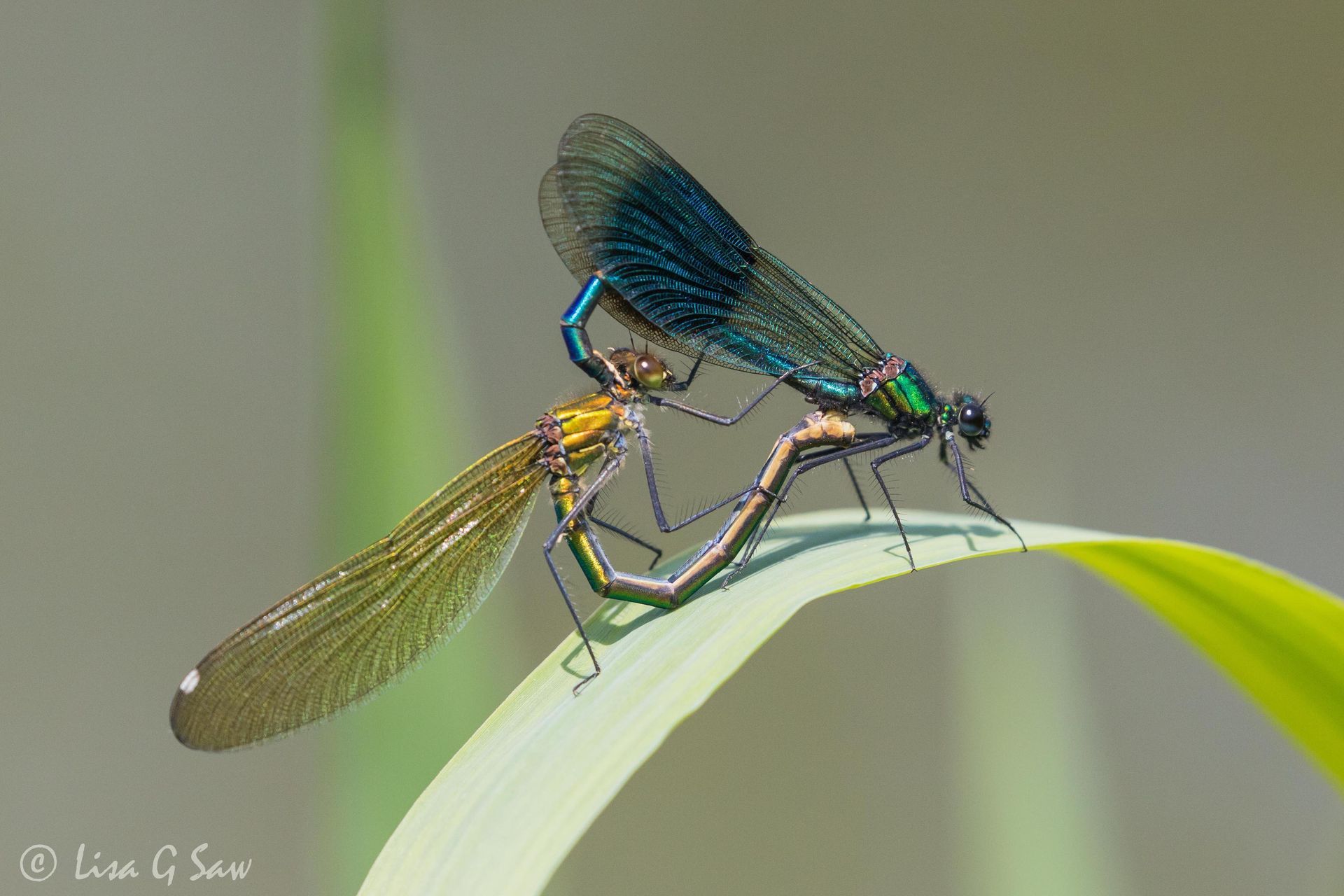DAMSELFLIES & DRAGONFLIES
These colourful delicate flying insects belong to the order Odonata and are quite beautiful interesting creatures. There are 57 species in the UK: 21 damselflies and 36 dragonflies. The former are usually smaller with eyes placed apart and wings that rest along their body when at rest. The latter are usually larger, with eyes together and wings either up or out at rest.
All Odonata start out as aquatic larvae called nymphs. Depending on species, it can take anywhere from 4 months to a few years before developing into an adult damselfly or dragonfly, which is quite remarkable really. Whilst the adults have legs, they're used predominantly for catching prey and not for walking. Both larvae and adults are carnivorous, feasting almost entirely on other insects. I think of both as being quick fliers - it's certainly challenging trying to capture them in flight - however, it doesn't prevent them from being predated upon, not only by birds, spiders and frogs, but even other larger species of dragonflies will predate smaller species.
Broad Bodied Chaser Dragonfly.
The female and immature males can look very similar and are this striking gold colour. The abdomen of the male appears more blue. The detail and colouration around the wing-bases are amazing.
Willow Emerald Damselfly.
Unlike most Damselflies, this species holds its wings open when resting. It has lovely pale wing spots (pterostigma). The abdomen of the male (above) is much slender than the female.
Five Male Banded Demoiselles.
This is a species of Damselfly. They have an amazing metallic blue/green colouration which tends to change from blue to green with age. They don't live long in the adult form - only about two weeks. Usually I see just one or two resting on a single reed.
Lone Female Banded Demoiselle.
Unlike the male, the females don't have a band on their wings.
They are a lovely golden green colour.
Banded Demoiselle Mating Wheel.
Timing was everything to get this photo. The eyes of the female were often obscured by the wings of the male, so I had for the moment when he raised his wings high enough.
